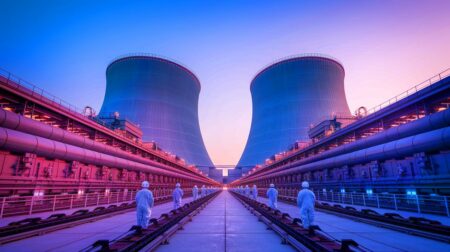As the race is on for ample clean energy sources to mitigate climate change, hydrogen is being seen as a promising source of renewable energy. Green hydrogen emits no carbon, but there is a downside: its production remains complex and costly.
Scientists worldwide are working on more efficient and affordable ways of producing no-carbon hydrogen such as through the electrochemical process of water splitting, which involves running electricity through water in the presence of catalysts to split the liquid into its chemical constituents: hydrogen and oxygen.
As part of such efforts, researchers at the Georgia Institute of Technology and Georgia Tech Research Institute have jointly developed a new process and materials whereby green hydrogen can be produced far more affordably as a source of renewable energy.
Currently, catalysts for producing hydrogen are made of noble metals such platinum and iridium, which are both expensive and rare. The researchers in Georgia, however, devised hybrid materials for the electrocatalyst, which makes the process far cheaper when performed at scale, they say.
“Our work will decrease the use of those noble metals, increasing its activity as well as utilization options,” says Seung Woo Lee, an associate professor at the George W. Woodruff School of Mechanical Engineering who is an expert on electrochemical energy storage and conversion systems.
“We have designed a new class of catalyst where we came up with a better oxide substrate that uses less of the noble elements. These hybrid catalysts showed superior performance for both oxygen and hydrogen (splitting),” Lee elucidates.
Working with scientists at the Korea Institute of Energy Research, Kyungpook National University and Oregon State University, the team used an powerful X-ray, with which “we can monitor the structural changes in the catalyst during the water-splitting process, at the nanometer scale,” according to Lee. “We can investigate their oxidation state or atomic configurations under operating conditions.”
Besides developing hybrid catalysts through their research, the scientists have also finetuned the catalysts’ shape and the interaction of metals employed in the process so as to reduce the use of the catalyst in the system while increasing its durability. Both these features can reduce costs.
“We want to use this catalyst for a long time without degrading its performance,” explains Jinho Park, a research scientist who was a key member of the team.
“Our research is not only focused on making the new catalyst but also on understanding the reaction mechanics behind it,” the scientist adds. “We believe that our efforts will help support fundamental understanding of the water splitting reaction on the catalysts and will provide significant insights to other researchers in this field.”
Importantly, Park says, the surface structure of the catalyst is key when it comes to determining whether it is optimized for the production of hydrogen. “That’s why we try to control the shape of the catalyst as well as the interaction between the metals and the substrate material,” he says.
The results of the research could benefit hydrogen stations for fuel cell electric vehicles and community-based microgrids designed to feed off electric grids that rely on renewable-driven backup power.
Today green hydrogen accounts for only around 1% of annual hydrogen production, largely because of the high production costs involved. However, energy experts say that large-scale use of hydrogen will be critical in enabling industrial sectors to achieve their net-zero emission goals in coming decades.
To that end, research is ongoing with the aim of reducing the cost of clean hydrogen by 80% to $1 per kilogram by 2030 so that hydrogen can replace natural gas and coal in storing extra electric energy in grids.
Did you like it? 4.5/5 (20)








